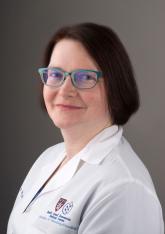News

AGA publishes CPU for AI in colon polyp diagnosis and management
- Author:
- Will Pass
“We predict an AI suite of tools for colonoscopy will seem indispensable, as a powerful adjunct to support safe and efficient clinical practice,”...
News

Even a short course of opioids could jeopardize IBD patient health
- Author:
- Will Pass
The study findings amplify the safety signal from previous inpatient studies showing that even a short course of opioids may increase risks of...
News

Microsimulation model identifies 4-year window for pancreatic cancer screening
- Author:
- Will Pass
Study highlights a window of opportunity for pancreatic cancer screening suggesting current surveillance guidelines be re-evaluated.
News

Many preoperative EAC biopsies fail to predict true tumor grade, leading to unnecessary esophagectomy
- Author:
- Will Pass
“The accuracy of tumor grade esophageal adenocarcinoma on preprocedural biopsies is suboptimal and should not be depended upon solely to make...
News
Report cards, additional observer improve adenoma detection rate
- Author:
- Will Pass
“We found that benchmarking individual endoscopists against their peers was important for improving ADR performance because this was the common...
News
Nano drug delivery could overcome toxicity in HCC to enable safer, more effective therapy
- Author:
- Will Pass
Ongoing advancements in nanotechnology may play a vital role in overcoming challenges associated with treating HCC.
News
Neutrophils may offer therapeutic target for Wilson’s disease
- Author:
- Will Pass
Also called progressive hepatolenticular degeneration, Wilson’s disease is an inherited nervous system disorder that can occur as a result of...
News
Two-thirds with microscopic colitis respond to bile acid sequestrants
- Author:
- Will Pass
Treatment may resolve chronic diarrhea in some patients with microscopic colitis.
News

Low-certainty evidence supports probiotics for IBS
- Author:
- Will Pass
Some combinations of probiotics or strains may be beneficial in IBS, but the evidence for efficacy is poor.
News
AGA aims to increase awareness of exocrine pancreatic insufficiency
- Author:
- Will Pass
Exocrine pancreatic insufficiency (EPI) is frequently underdiagnosed. AGA CPU advises on the epidemiology, evaluation, and management of EPI.
News

AGA issues CPU for CRC screening, postpolypectomy surveillance
- Author:
- Will Pass
CPU addresses how individuals should be risk stratified for CRC screening and postpolypectomy surveillance.
News

Solid therapeutic hierarchy for eosinophilic esophagitis still unclear
- Author:
- Will Pass
Meta-analysis supports efficacy of most treatments for EoE, but with some limitations.
News
Rectal cancer risk is markedly higher at 10 years post colectomy
- Author:
- Will Pass
Study findings suggest that more intensive long-term surveillance is needed for colectomized patients with IBD.
News
AGA CPU: Essentials to prevent complications with ostomies
- Author:
- Will Pass
Multidisciplinary coordination is imperative to prevent hospital readmissions and improve quality of life for patients.
News
AGA CPU focuses on noninvasive tests in patients with NAFLD
- Author:
- Will Pass
Noninvasive tests in GI have the potential to improve the detection of advanced fibrosis.
